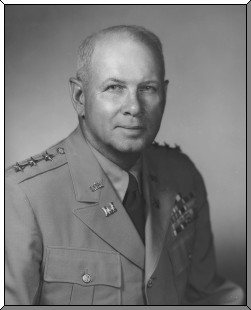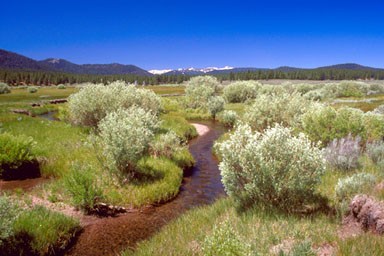| |
 |
| |
Lt. Gen. Samuel D. Sturgis Jr. |
| |
 |
| |
Today the Sacramento District maintains this 1,050-acre wildlife management area at its Martis Creek Lake project near Lake Tahoe. Hiking the park's trails, visitors can see resident species, including mule deer, coyote, red-tailed hawk, mountain quail, and Canadian geese. |
More than a decade before the environmental movement took hold, Lt. Gen. Samuel D. Sturgis Jr., Chief of Engineers (1953-1956), envisioned the Corps of Engineers as a partner in the fight to conserve our nation's natural resources.
Addressing the International Association of Game, Fish, and Conservation Commissioners in September 1953, Sturgis declared: “We must obey the laws of nature and work in harmony with natural forces rather than against them. Man cannot dominate these forces; but, by working in harmony with them, he can preserve the heritage of future generations.”
Sturgis traced his own love of nature to his boyhood. All forms of conservation interested him, from soil to wildlife. The destruction of forests filled him with “real pain,” and he regretted that in the march “of what we often inaccurately term ‘civilization’, some values are likely to be lost.” But he believed that the Corps could help.
The Corps could provide shelter for wildlife on coastal and inland waters. In fact, Corps’ projects already furnished “more than 3.5 million acres of land for some form of wildlife management and recreation.” And Sturgis had a vision—to see “resting grounds for migratory game, refuges, managed public hunting, fish culture, game management, research laboratories, field headquarters for wildlife research and administration, arboretums”—all aimed at “public use and enjoyment of wildlife resources.”
“The Corps stands ready and willing,” Sturgis declared, “to join with each of you and give you every possible assistance that our authorized functions permit to obtain the greatest practicable benefits for wildlife from our projects.”
* * *
April 2004